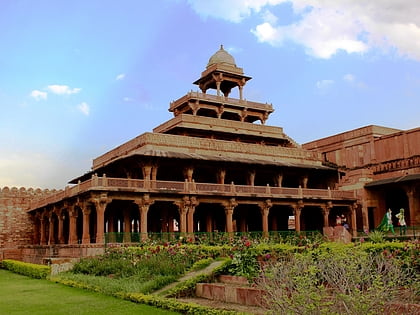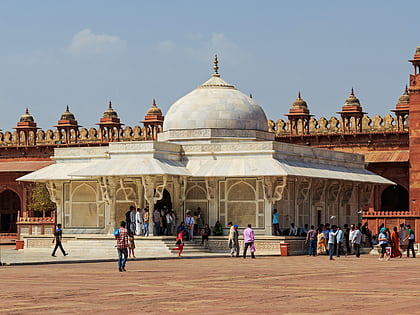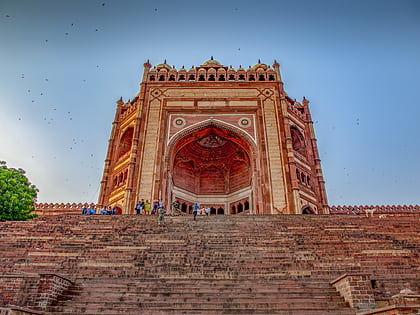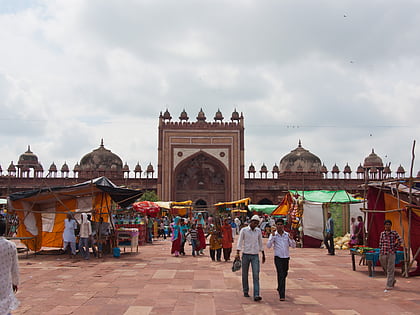Panch Mahal, Fatehpur Sikri
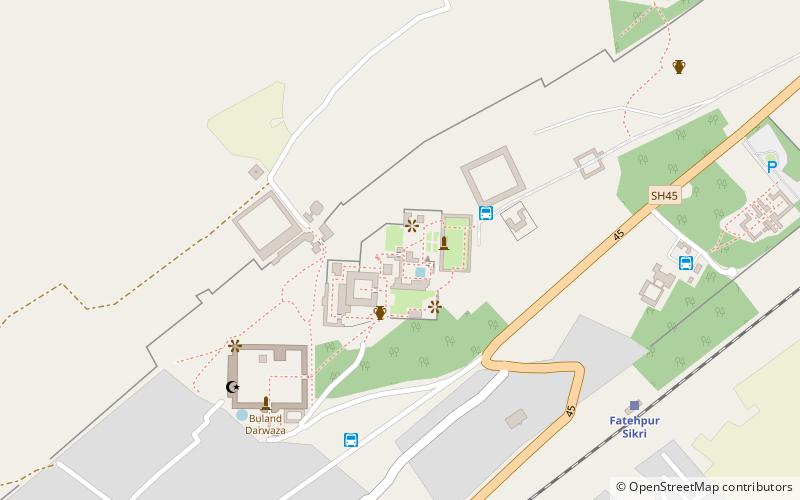
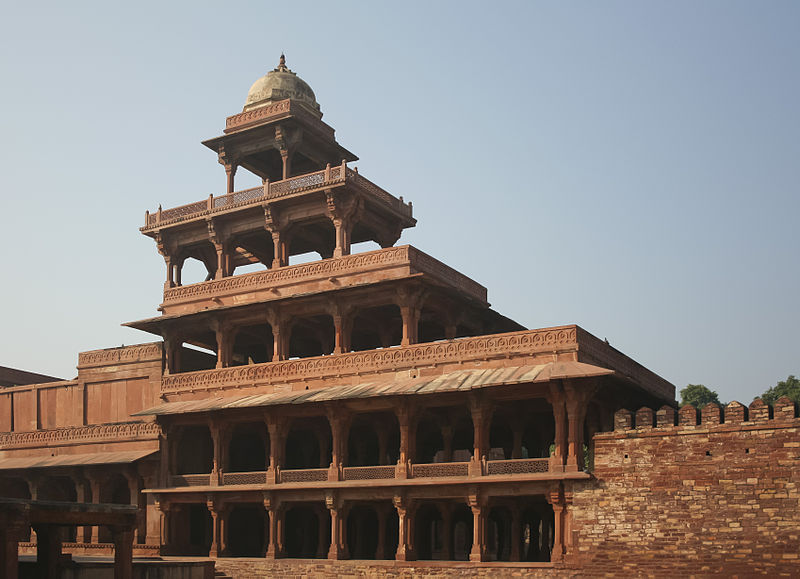
Facts and practical information
The Panch Mahal, a striking edifice in the historic city of Fatehpur Sikri, India, is a testament to the architectural ingenuity of the Mughal era. This five-story palace, whose name translates to "Five Palaces," was constructed during the reign of Emperor Akbar in the late 16th century and was primarily used for leisure and entertainment purposes.
Characterized by its unique design, the Panch Mahal stands adjacent to the Jodha Bai's palace and is notable for its pyramidal shape which diminishes in size as it ascends, giving it a tiered appearance. The ground floor boasts 84 columns, which support the entire structure and create a majestic ambience. The number of columns decreases with each successive floor, culminating in a single domed pavilion at the top, which offers a panoramic view of the surrounding area.
The Panch Mahal was designed as a pavilion for the royal ladies of the court to relax, enjoy the cool breezes, and watch events and processions unfolding in the courtyard below. The openness of the structure, with its extensive use of columns and absence of walls, allows for natural ventilation, making it an ideal retreat during the hot summer months.
Visitors today can marvel at the intricate details of the column designs, each featuring unique carvings and motifs, reflecting a blend of Hindu and Islamic architectural styles. The palace is an exemplary piece of Akbar's secular vision, incorporating elements from different cultures and religions.
Fatehpur Sikri
Panch Mahal – popular in the area (distance from the attraction)
Nearby attractions include: Tomb of Salim Chishti, Buland Darwaza, Jama Mosque.
